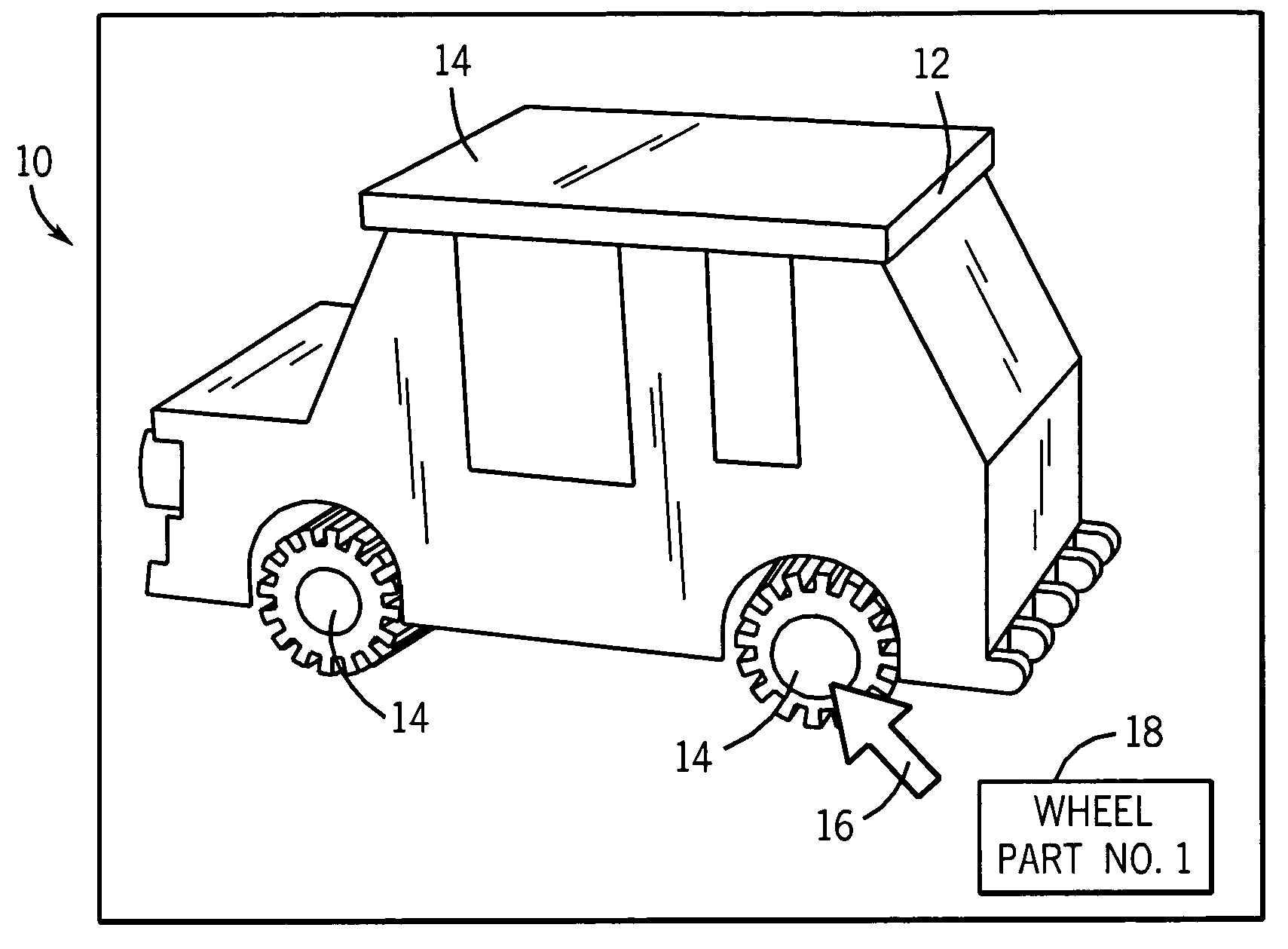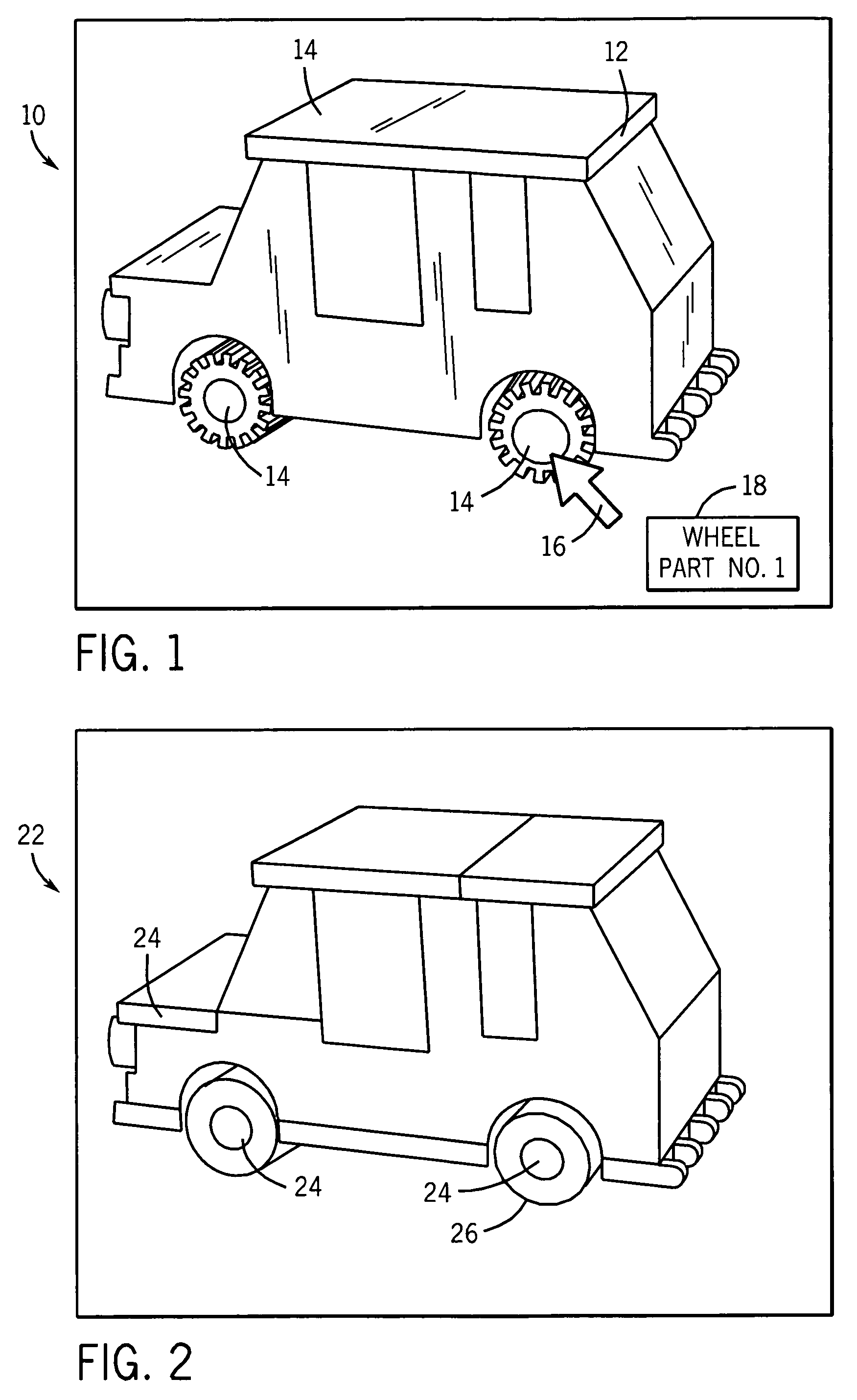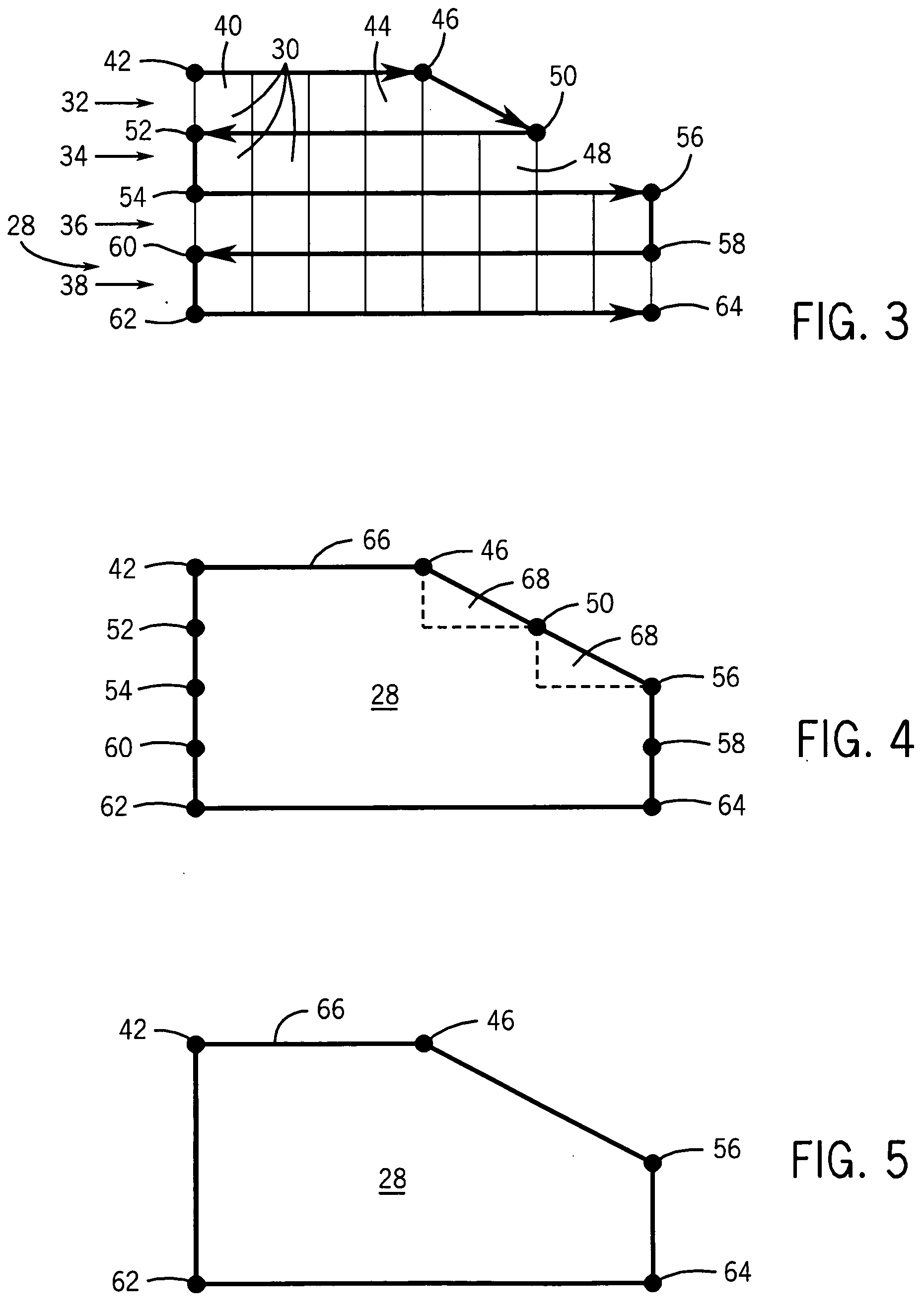Method and system for generating polygonal boundary definitions for image objects
a polygonal boundary and definition technology, applied in image analysis, image enhancement, instruments, etc., can solve the problems of inefficiency, inability to define manually, and severely limit the degree to which such 2d image element hot linking has been used, so as to reduce the size of the boundary pixel list
- Summary
- Abstract
- Description
- Claims
- Application Information
AI Technical Summary
Benefits of technology
Problems solved by technology
Method used
Image
Examples
Embodiment Construction
[0022] Turning now to the drawings and referring first to FIG. 1, an exemplary 2D image 10 is illustrated consisting of an assembly of image objects. In the illustrated example, the 2D image is of a toy car. Clearly, any suitable assembly of objects or even single objects can be analyzed and processed in accordance with the present invention. Moreover, it should be noted that the image presented in FIG. 1 is illustrated as it might appear on a computer screen. In general, the present invention facilitates analysis of digitized images to identify boundaries of image objects of interest. The view shown in FIG. 1, may, for example, be part of a digital catalog, manual, web tool, and so forth. The image will typically be stored in any conventional manner on a digital memory device and served to a user via a monitor. The image, where available as a web page, may be displayed in a conventional browser or other viewing application. Details of such browsers have been eliminated from the vie...
PUM
 Login to View More
Login to View More Abstract
Description
Claims
Application Information
 Login to View More
Login to View More - R&D
- Intellectual Property
- Life Sciences
- Materials
- Tech Scout
- Unparalleled Data Quality
- Higher Quality Content
- 60% Fewer Hallucinations
Browse by: Latest US Patents, China's latest patents, Technical Efficacy Thesaurus, Application Domain, Technology Topic, Popular Technical Reports.
© 2025 PatSnap. All rights reserved.Legal|Privacy policy|Modern Slavery Act Transparency Statement|Sitemap|About US| Contact US: help@patsnap.com



